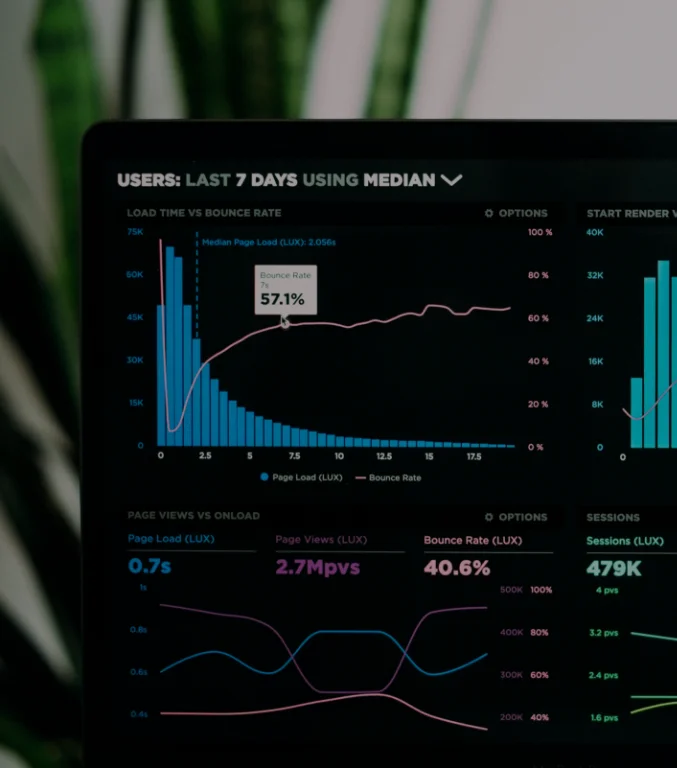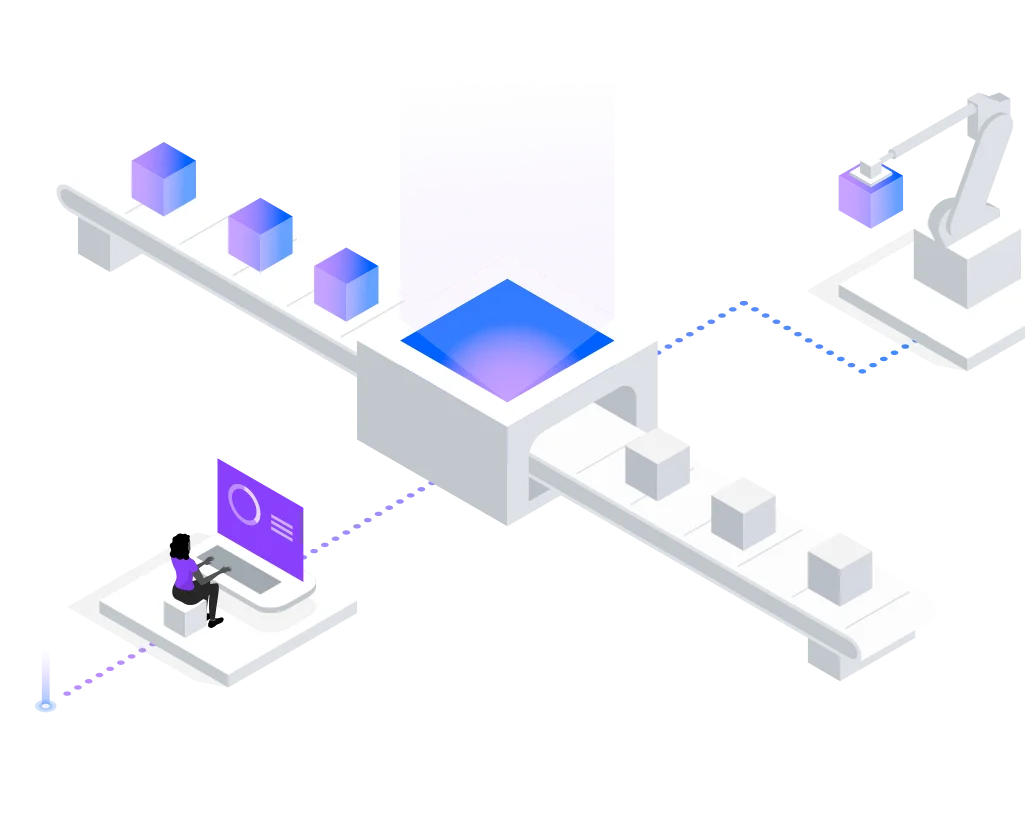The Benefits of Advanced Analytics
1
IMPROVE DECISION MAKING
With advanced analytics, non-technical business users at any level of the organization can make informed decisions within their unique sets of responsibilities. Analytics leverages Big Data represented by a wide range of data resources, then delivers insights in a capacity each user can understand. The network effect of accurate insights delivered across the organization is greater business value and an improved data culture.
2
ELIMINATE DATA SILOS
Classic data models lead to “silos” of data, where different departments and teams access old or conflicting data resources. Advanced analytics creates a foundation of data resources users from across the enterprise can access individually, ensuring everyone is “speaking the same language” when it comes to their data.
3
ENCOURAGE COLLABORATION
Although each business user accesses data in a purpose-built capacity, shared data resources mean employees from across teams can collaborate more effectively. Senior business leaders from across departments access data separately that nonetheless coordinates during executive meetings as well. No matter the future initiative, teams have no trouble working together with the support of accurate data.
4
STREAMLINE WORKFLOWS
Advanced analytics can augment employees’ individual workflows for greater efficiency and accuracy in the decisions they make every day. Tools that integrate with existing software mean robust data resources are accessible without transitioning between applications. Augmenting employees’ decision making in this way means critical processes large and small add the greatest possible value, every time.
5
INCREASE VISIBILITY
With robust and shared data resources accessible to key players across the organization, stakeholders of all types have complete visibility into the essential data driving their organization. Where senior executives with limited time may have relied on “instinct” rather than data in that past, those same executives may access insights immediately—even via a personal mobile device—improving decisions and collaboration at the highest levels of the organization.
6
ANTICIPATE DISRUPTIONS
Companies with advanced analytics are better equipped to sustain themselves during macroeconomic crises, as well as small market disruptions that might have otherwise hurt their bottom lines. That means stronger business continuity, and opportunities to build resiliency and trust among customers, company stakeholders, and employees.
7
SUPPORT DATA LITERACY
With governed but democratized data access, analytics allows business users typically unaware of analytics processes to hone their understanding of analytics and collaborate more broadly with those assets in mind. Sustained access to insights from analytics supports greater data literacy as those collaborations continue.
8
OPTIMIZE OPERATIONS
In addition to customer, market, and other forms of external data, enterprises can leverage analytics to improve internal processes—specifically, by leveraging internal data produced by their own operations. Whether business leaders want to overhaul workforce management or optimize essential processes on a factory floor, there are applications for advanced analytics in all corners of modern organizations.
Analytics & Big Data by Uvation
The analytics experts at Uvation develop a deep understanding of your operations and business goals. We help create a roadmap for broad and secure analytics adoption that drives measurable business benefits. We help you identify the right technologies for your unique business needs as well.
1
DATA ACCESSIBILITY
Uvation helps you improve accessibility to data resources across your organization while maintaining secure and intuitive governance. Ensure efficient delivery of data insights to anyone in your organization with purpose for analytics access, leveraging any variety of data resources that can add real value to your business.
2
OPTIMIZED UI
Partner with Uvation to select or develop your own purpose-built user interfaces that make analytics work for individual employees or functions. Integrate analytics capabilities into those users’ workflows to encourage adoption and data literacy in the existing context of your business operations.
3
SIMPLIFIED GOVERNANCE
Choose an analytics platform that makes governance and security work for your users, rather than create barriers or risk that could inhibit business value. Ensure you have the right levels of access for your users, no matter how your business needs to change. Simplify the ways you open or close data access to all your users as well.
Analytics & Big Data Statistics
Average ROI for every dollar spent (USD) on advanced analytics solutions in 2014.
13.01 USD
The global advanced analytics market size in 2021
34.56 billion USD
The expected global CAGR for advanced analytics from 2022 to 2030
21.1%
Maximize Your Use of Big Data and Analytics with Uvation
Uvation’s experts can examine your business model and objectives and help you choose the most effective data analysis solution for your organization’s goals. Uvation has joined forces with the top business analytics providers and can help you choose the best solution to support your growth.
Connect with Uvation today to select the optimal data analytics platform for your unique needs.

What is Advanced Analytics?
Advanced Analytics, also called ‘Business Intelligence,’ refers to the processes by which software converts vast quantities of data (i.e., Big Data) into valuable insights users within an organization can leverage when making decisions. Recent progress in this field has made advanced analytics more accessible to non-technical users, easier to integrate into existing workflows, and more manageable in terms of collaboration and governance. Data leaders at organizations considering advanced analytics adoption must:
1
DEFINE SPECIFIC USE CASES FOR ADVANCED ANALYTICS
Launching new analytics software can be difficult because of existing, legacy data tools that are often obsolete and applicable to only individual teams or departments. Data leaders must identify the right use cases for new analytics before expanding these pilots to other parts of the organization. In time, users will realize the value of advanced analytics over their existing, legacy data resources.
2
DEVELOP A STRATEGIC ROADMAP FOR INTEGRATION AND ADOPTION
The success of advanced analytics depends on users’ willingness to use those tools as part of their workflows. Analytics often applies within the daily decisions of individual users across the organization; but also, within collaborations across departments or teams where a shared understanding of data is critical. Data leaders must ensure they can maintain appropriate data governance and security as well, even as they attempt to broaden access and improve collaboration.
Technologies and Processes Involved in Advanced Analytics
There are several technologies and processes involved in deploying advanced analytics. Here are some that you should be aware of.
PROCESS AUTOMATION
As part of its decision-making support, advanced analytics can automate some of the most tedious processes users manage today—both at individual employee and executive levels. These processes typically require users to visit multiple applications and manually retrieve the information they need, where advanced analytics will serve up these resources automatically as part of users’ existing workflows.
SELF-SERVICE CAPABILITIES
The hallmark of advanced analytics is its support of non-technical users as they engage in self-service capabilities. That means users can retrieve the data-driven insights they need via purpose-built interfaces, widgets, and applications that are streamlined and easy to understand. This ensures users access data in the right contexts and liberates them from dependence on overburdened technical users, such as data scientists and data stewards.
STREAMLINED GOVERNANCE
At the company level, data governance refers to an organization’s policy and strategic approach to data permissions, usability, and integrity. Traditional data governance can be tedious, requiring manual processes associated with permissions and access. This can become cumbersome as business needs change; it can become cumbersome as the manner in which data must be delivered to users changes as well. Advanced analytics makes adapting governance and ensuring all levels of compliance easy through easy-to-control operational functions.

Contact Uvation today to learn more about our Analytics & Big Data offerings.
Get in touch for a consultation call, or get answers to any questions you might have.

